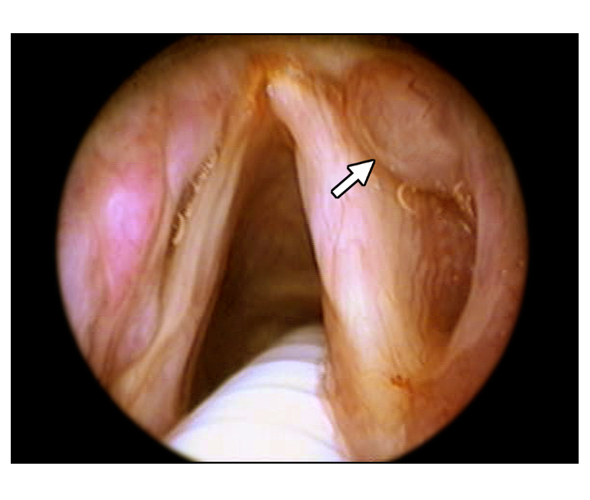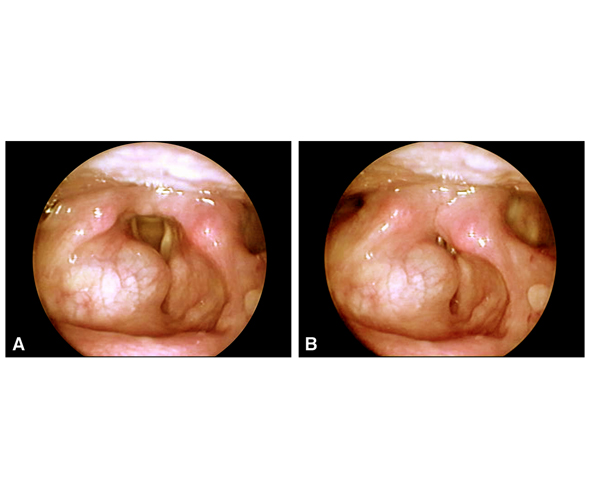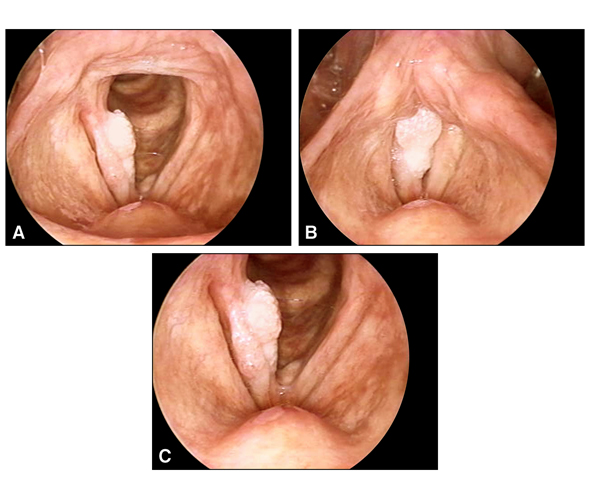1.
Describe the different anatomic layers of the true vocal fold and why they are important in voice production.
2.
Give a detailed anatomic and physiologic description of the lamina propria. What is the cover-body theory?
3.
What is Reinke’s edema? What does it signify? How should it be managed?
4.
What are the most common types of human papilloma virus in respiratory papillomatosis? Which types are associated with squamous cell carcinoma?
5.
Where and what is the saccule?
6.
What are the different classifications of saccular cyst and how are they currently treated?
Reference(s):
Young, V. N., & Smith, L. J. (2012). Saccular cysts: a current review of characteristics and management. The Laryngoscope, 122(3), 595–599.
7.
Describe the classification of laryngoceles and the management of each.
8.
Discuss mucous retention cyst vs. epidermoid cysts of the vocal folds.
9.
Describe the different classifications of midmembranous vocal fold lesions. How do they differ on stroboscopy and treatment methods?
10.
When would you use laser treatment for vocal cord nodules?
Reference(s):
Benninger, M. S. (2009). Laser surgery for nodules and other benign laryngeal lesions. Current Opinion in Otolaryngology & Head and Neck Surgery, 17(6), 440–444.
11.
How does psuedosulcus and sulcus vocalis differ?
Reference(s):
Lee, A., Sulica, L., Aylward, A., & Scognamiglio, T. (2016). Sulcus vocalis: A new clinical paradigm based on a re-evaluation of histology. The Laryngoscope, 126(6), 1397–1403.
12.
The MICU has just consulted you for post-extubation hoarseness in a chronically intubated patient. What will you most likely find and how will you manage the problem?
13.
How would you recommend resecting laryngeal papillomas? Laser, microdebrider, etc.?
14.
What is cidofovir? What are the results of intralesional cidofovir injection in laryngeal papillomas? Any side effects?
15.
Would you recommend cidofovir or Avastin for laryngeal papillomas?
16.
You are referred a patient with worsened dysphonia after removal vocal fold polyps. What is the pathophysiology of postoperative dysphonia? How will you manage this patient?
Reference(s):
Hansen, J. K., & Thibeault, S. L. (2006). Current understanding and review of the literature: vocal fold scarring. Journal of Voice : Official Journal of the Voice Foundation, 20(1), 110–120.
17.
What are your guidelines for management of post-op vocal fold microsurgery (voice use, steroids, reflux prophylaxis, etc.)?
18.
Your patient has laryngeal papillomatosis. She wants to know if she should have an office-based vs. operating room procedure. Educate her on the pros and cons of office-based procedure.
Reference(s):
Franco, R. A. J. (2007). In-office laryngeal surgery with the 585-nm pulsed dye laser. Current Opinion in Otolaryngology & Head and Neck Surgery, 15(6), 387–393.





